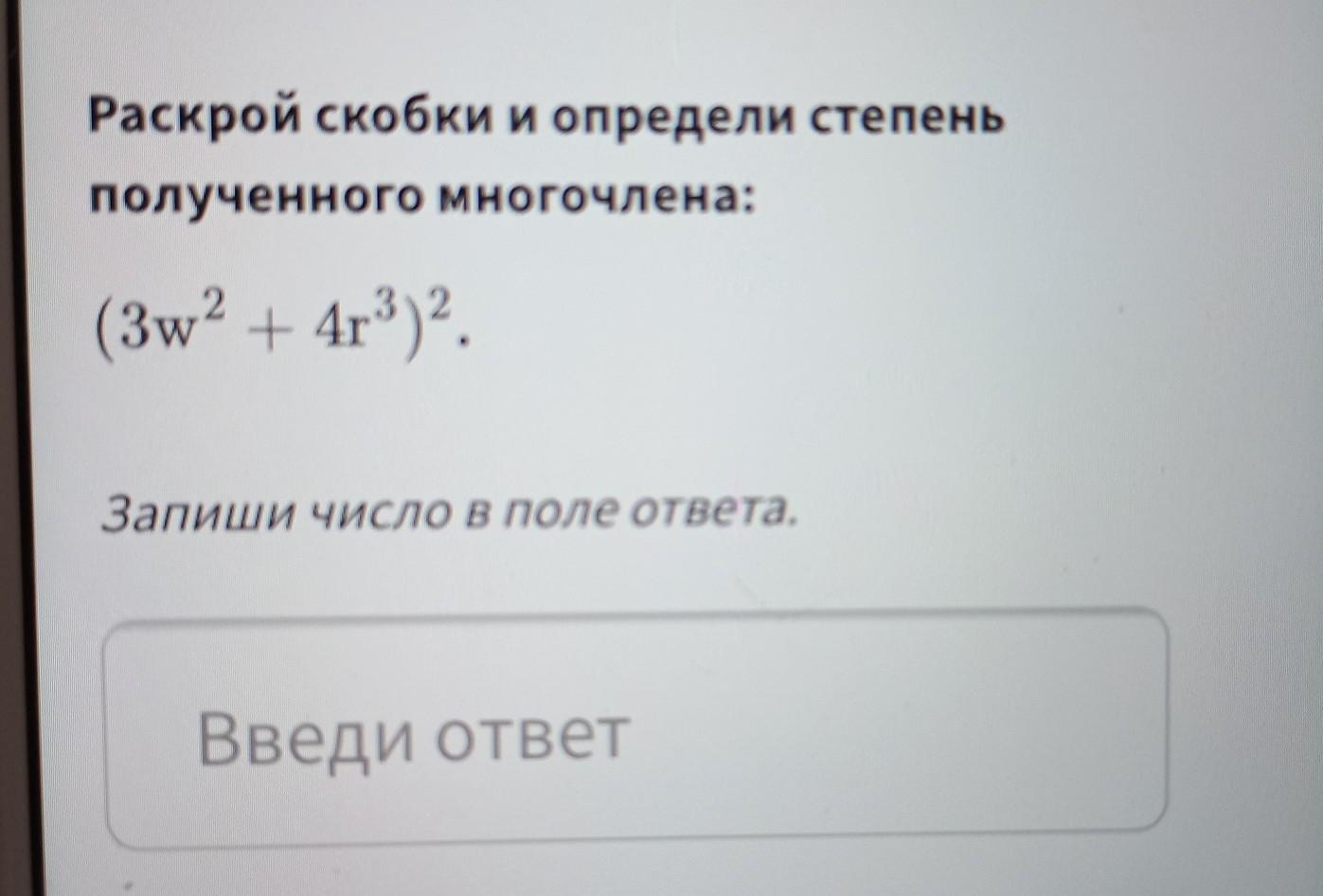Предмет: Алгебра,
автор: sasag9085
помагите очень надо
Приложения:

Ответы
Автор ответа:
1
Ответ: 6 степень .
Раскроем полный квадрат по формуле .
Степенью многочлена стандартного вида называют наибольшую из степеней, входящих в его запись одночленов.
Первый одночлен имеет степень 4, второй - степень 2+3=5 , третий - 6.
Степень многочлена равна 6 .
spamgg002:
пожалуйста мы профиле задание решите там 100 баллов
Похожие вопросы
Предмет: Русский язык,
автор: satkanayana
Предмет: Русский язык,
автор: gopnik001
Предмет: Окружающий мир,
автор: ТаНяШа884
Предмет: Английский язык,
автор: vetvxui